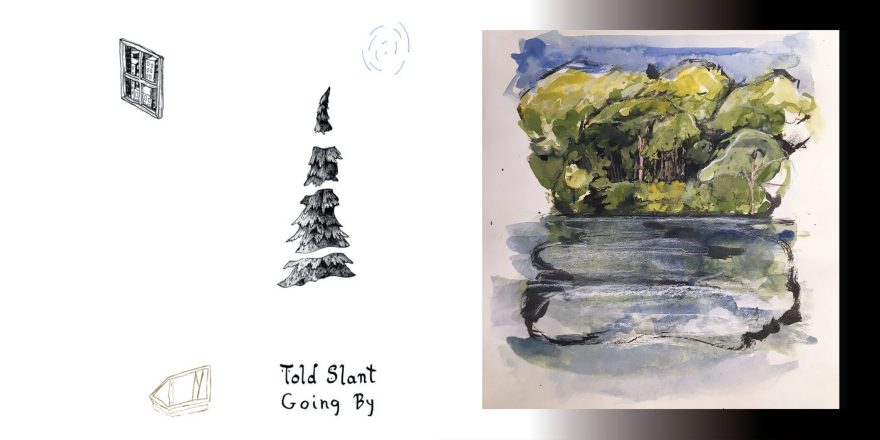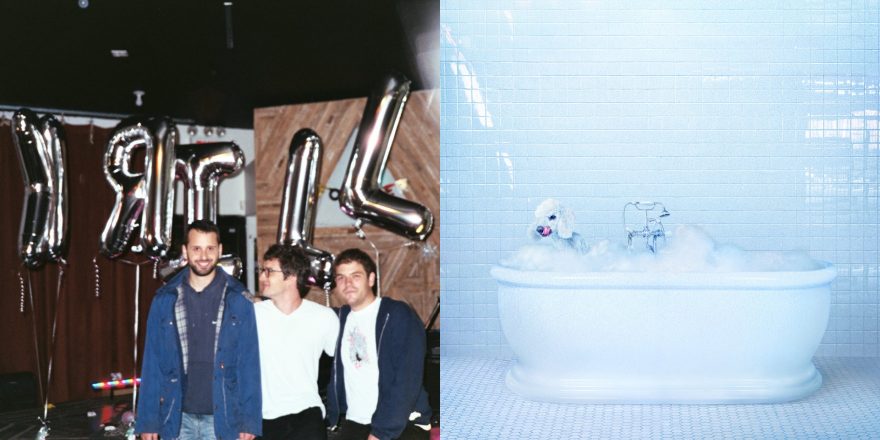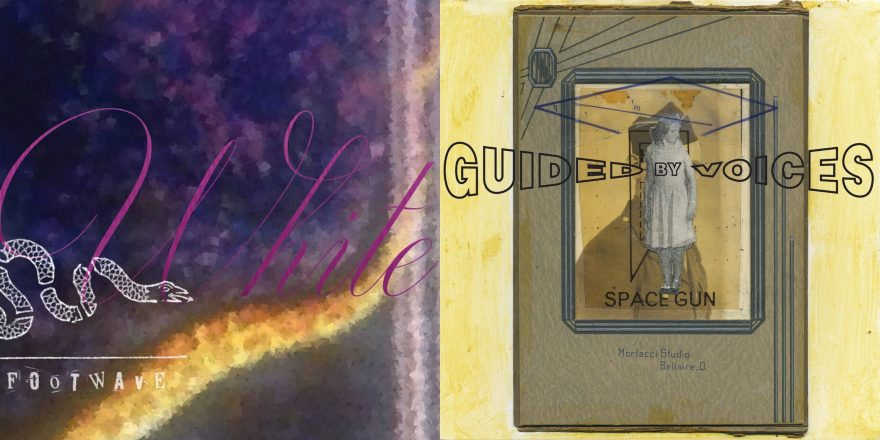There is something unsettling about Big Ups. Why does this post-hardcore band almost exclusively play shows in an indie-rock scene, where audiences rarely move around with more abandon than the performers? Why is the band’s vocalist and lyricist, Joe Galarraga, singing to me from a seated position on one of the couches at Shea Stadium when, moments ago, he was pacing and gesticulating from the stage? Why do I feel that the experience of listening to post-hardcore without all of its performative miming of conflict and aggression is actually more confrontational, makes me feel more uneasy? Big Ups as a project and 2018’s Two Parts Together in particular are about asking questions, and the band is clever enough not to answer them for us.
On Two Parts Together, Galarraga’s vocals bounce between softly stated, fixated resignations, and urgent, defiant yelps, like a David Berman who has finally snapped, shouting and pleading with the American cultural landscape he once found it sufficient to merely dirge for. There is a tension that threads through the entire record: What, if anything, can we do to challenge a political reality that has, in many ways, already left us defeated? The record’s title track reads like a love song:
I just wanted to know
How it would feel
To watch myself
Disappear
Into someone else
Into one true love
Distant future
I’m there
Holding someone’s hand
In a ritual
The worlds are for
A friend
There to testify
And to live a life
Someone replace
Who I am
To me, it reads as more of a kind of suicidal surrender—a desire to unburden oneself of oneself, and one which Galarraga knows he has to stamp out:
I want each day in circumstance and practice
To echo the commitment
Continue to bear witness
With me as my witness
These final lines, repeated like an oath that Galarraga feels he’s on the brink of breaking, undergird the rest of the record.
What exactly the narrator feels they need to resist is never explicitly named, though we might guess that whatever it is, it has to do with the relationship of the individual to society, the subject and the systems of power that act on them. And what this record does so well is that it manages to illustrate the violence of the structural by honing in on the experience of the individual. This isn’t Woody Guthrie’s “All You Fascists,” nor is it the kind of diaristic songwriting that threatens to sever one’s relationship to culture more broadly. It’s a record in which bodies are strained and beaten down by the weight of merely living and the sustained pressure of resisting, but they’re also bodies with dreams, desires, imaginations, and individuation.
While each song examines the physical and emotional consequences of sustained struggle, the site of that struggle shifts. The record’s second track, “In The Shade,” expands upon the first track’s question about limits and buckling in the face power, but locates the site of that struggle in the narrator’s relationship with their own subjectivity:
What’s latent?
What’s hiding?
Obscured?
What’s unknown?
What’s Dormant?
Untapped?
In the shade.
Two things are happening here: First, there’s the lament that some lack, or some failure of consciousness, keeps us from the modes of being that we want to access. Maybe this self-obfuscation even keeps us from imagining what those modes of being could be. In any case, I think the idea here is that, as subjects, we are missing something fundamental to the imagining and creating of a different world. Second, there’s the question of how we came to be this way. What has rendered us untapped? Dormant? Galarraga is describing the relationship between subjects and power as a process by which governments, ideologies, and institutions shape us in strategic ways. As such, a track that could easily be read as only saying “I am my own obstacle in this struggle against the state of the things,” is also saying “Look at me, this is what the state of things has produced.” Not only is that a lot more interesting, it’s also much more heartbreaking!
If I told you that I was going to do a close reading of every song on this record, you would probably stop reading this review right here. Good news! I’m not going to! For the purpose of looking at this record as an examination of what happens to us when we try to simultaneously live under and live against American capitalism, I think looking at those two tracks is enough. But there are a few scattered moments on the record that I’d like to talk about that contribute to the narrative in a meaningful way.
The centerpiece of the record, a short synth driven instrumental track called “Tenmile,” seems to serve as a stand in for a kind of space outside of the conflict of the record. An electric guitar strums the same chord, rhythmically, but the chord rings out in a slightly different way each time. Eventually, the beautifully similar sound of a body of water is faded in. This song is from a different world, one that Galarraga desires in one way or another. The question for me is, if “Tenmile” is the laying down of one’s burden, is it in the spirit of victory or defeat? The place we arrive at by willing a more just version of the world into being, or by finally being crushed by the weight of this world and our failure to change it?
There are several references to a lake on the record: “Trying To Love” describes the lake as a site of toxic overgrowth, a place inhospitable to us that we are forced to contend with nonetheless. In “Imaginary Dog Walker,” Galarraga dreams of a version of “the land that holds the lake” in which “there will be no barriers/the chains and the leashes will cease to be dangers.” With the agents of infection gone, Galarraga hopes that our imaginings will yield a world, and lives within it, that aren’t predicated upon the quotidian resistances of merely surviving. When he writes that he wishes for the lake to crack, I can’t help but imagine a river. Maybe Tenmile River? Whether that marks an ending or a beginning, a different world or a departure from this one, there’s something to be said for just imagining it.
There are those who want
And those who run
Those expelled from the lake in a fiery tremor
But we all want the same thing
And that is to thrive.
And so there’s beauty in the desire to thrive any way we can.
But what’s also at stake in this record is, as Gandalf put it: “What we do with the time we’re given.” For Big Ups, that means a commitment to recording these experiences. It means living, surviving, and observing against all odds, against powerful and complex opposition, and at a great cost. In a sense, Two Parts Together is a record that imagines itself as an act of defiance, and while there’s a potential to read that as hubristic, I don’t think it’s quite so self-congratulatory. There is no victory in sight for Galarraga. The act of bearing witness, of telling the world what you see while you’re here, is merely what Big Ups sets out to do. There is nothing didactic about it. In the end, we’re still left atomized, with battered bodies, trying to imagine something else.







